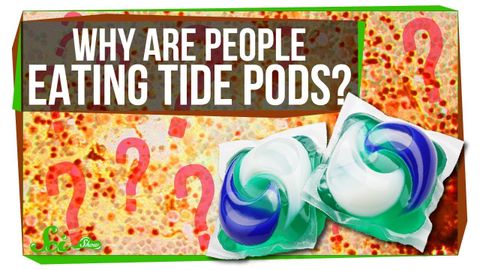Why People Keep Eating Tide Pods
joey joey が 2021 年 06 月 28 日 に投稿  この条件に一致する単語はありません
この条件に一致する単語はありませんUS /æŋˈzaɪɪti/
・
UK /æŋ'zaɪətɪ/
- n. (c./u.)共有地;(地域共同体が所有する)共有地
- adj.公共の;典型的;一般の;広まっている;下品な;普通名詞の
US /ˈhaɪˌdʒin/
・
UK /ˈhaɪdʒi:n/
- n. (u.)衛生状態;個人衛生;口腔衛生;食品衛生
エネルギーを使用
すべての単語を解除
発音・解説・フィルター機能を解除

